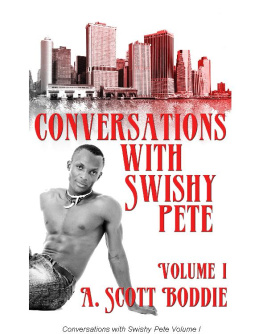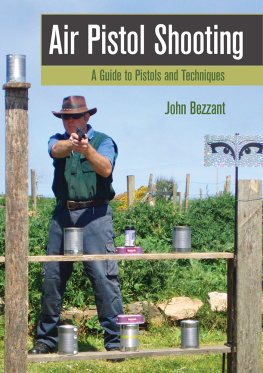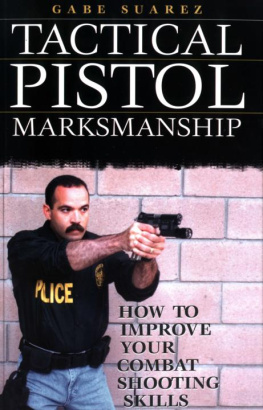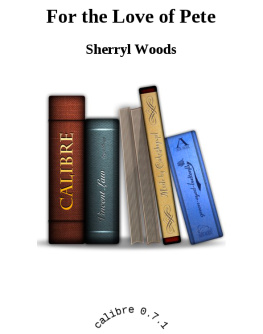This edition is published by PICKLE PARTNERS PUBLISHINGwww.picklepartnerspublishing.com
To join our mailing list for new titles or for issues with our books picklepublishing@gmail.com
Or on Facebook
Text originally published in 1952 under the same title.
Pickle Partners Publishing 2015, all rights reserved. No part of this publication may be reproduced, stored in a retrieval system or transmitted by any means, electrical, mechanical or otherwise without the written permission of the copyright holder.
Publishers Note
Although in most cases we have retained the Authors original spelling and grammar to authentically reproduce the work of the Author and the original intent of such material, some additional notes and clarifications have been added for the modern readers benefit.
We have also made every effort to include all maps and illustrations of the original edition the limitations of formatting do not allow of including larger maps, we will upload as many of these maps as possible.
PISTOL PETE: VETERAN OF THE OLD WEST
BY
FRANK EATON
1THE NEW HOME
Father
FATHER owned a livery, feed and sales stable, in Hartford, Connecticut, where I was born on October 26, 1860.
After the Civil War Father came home from the army, sold his business, and went out to Kansasa new country in the Far West. He went on the train, which was an adventure in itself in those days. Before he sent for Mother and us three children, he bought a farm and built a house. He had a home ready for us, so we did not have many of the hardships of the earlier pioneers.
Father was about thirty-five years old at that time, six feet tall, and weighed about one hundred and eighty-five pounds. He was a very strong man with rather short arms. He had kind brown eyes, dark brown hair and a heavy brown mustache. I was seven years old then, and I remember just how my father looked; he always wore a blue flannel shirt, summer or winter, and a pair of blue jean pants with suspenders.
I loved my father.
He was always tolerant with other people and respected their opinions, but he had strong convictions and set ideas of right and wrong. When he thought he was on the right side, he was a hard man to turn. Father was a soft-spoken man, never quarrelsome; it was hard to make him madbut once aroused he had a violent temper and you had better get away and let Nature supply the lightning rods!
Father met us at the train at Lawrence, Kansas. We were looking out the window, trying to see him; as the train slowed to a stop we caught sight of him. He was standing by his team, holding their heads and rubbing their noses so they would not be afraid of the train. I started to rush for the door, then went back and got my little sister by the hand. Mother had my baby brother in her arms and one of the other passengers helped her with some bundles and our valise.
Father hugged us and put my sister and me into the back of the wagon. Mother and my baby brother sat up on the seat with him.
I remember how he looked at her and said, Its good to see you, Lizzie.
We stopped a couple of days about six miles out of Lawrence and visited some of Fathers relatives. Then, we drove on to our new home.
The Homestead
Our home was in Osage County, Kansas, about thirty-eight miles southwest of Lawrence, at a place called Rock Springs, on the headwaters of the Red Woods Branch. Four big springs of good water came together there and it was a famous watering place and camp grounds for emigrants and freighters. (A freighter was a teamster who hauled goods and supplies from the end of the railroad to outlying points.)
There had been an old hotel on the place but it was burned by William Clarke Quantrill and his men at the time they made the raid on Lawrence, Kansas. Our house was built on the site of the ruins of the old hotel; it lay on a gentle slope of ground on the west bank of the stream about a hundred yards off the old Santa Fe Trail.
The Santa Fe Trail
The Santa Fe Trail was a great broad trail and the only real one in that part of the country at the time. It was a trade route, the first of the great transcontinental trails, between the East and West.
In 1821 a man named William Becknell freighted a load of goods by pack horses from Missouri to New Mexico. The following year he made another trip from Franklin, Missouri, and arrived in Santa Fe, New Mexico, with twenty-one men and three wagonloads of goods which he sold for a good profit. Becknell was known as the father of the Santa Fe Trail. Others soon followedcaravans began moving west starting from the Missouri River and it was called the Santa Fe Trail. Later, Independence, Missouri, became the official starting point.
Where we lived, in Kansas, the trail was lined with sunflowers; they were beautiful and they were also used for fuel. The stalks were so large they were chopped down and cut into stove lengths and burned for wood. The flowers were dried and used for quick fires or for starting a fire. The sunflowers provided the wagon trains and caravans with fuel when they stopped at the Rock Springs Camp Ground. One of my earliest recollections is cutting down the sunflowers and watching the wagon trains on the trail.
Wagon Trains
Each wagon had its string of oxen hitched to it and the driver walked along on the left side of his team with his whip over his shoulder.
The driver was called a bullwhacker, He was usually a young man and he drove from two to eight yoke of oxen. He wore a wide-brimmed hat and high-topped boots with broad heels. He walked by the side of his team most of the time and commanded them with a long bullwhip.
The whip was a braided lash, from twelve to fourteen feet long, with a broad buckskin popper on the end. The whip was about one and one-half inches thick where the whipstock was tied on and ran to a true taper to the size of your little finger, where the popper was fastened. The whipstock, or handle, was of shaved hickory and was four or five feet long. From the size of a pitchfork handle at the butt, the whipstock tapered like a billiard cue, to the size of a mans finger where the whip was fastened on. A good bullwhacker could kill a wolf or a rattlesnake with his whip and the crack of his whip was louder than a shot from a forty-five.
There was a trail boss, too, or an emigrant boss as he was sometimes called. He was a man who had to know his job. He was always an old plainsman. The more he knew of outlaws, Indians and the country he was traveling, the better he was. His word was law; he was in absolute control of the whole outfit. The emigrant boss knew the destination of his wagon train and his job was to get them through. When they arrived his job was done.
There never was a prettier sight than ten or twenty big wagons with boxes as high as your chin all covered over with white wagon sheets. Women and children looked out both ends of the wagon; the boys and some of the men drove the cattle and horses along in the rear. Mounted and armed men rode on the front and flanks, looking for any sign of danger. The whole outfit, moving slowly along the trail, once seen could never be forgotten.













